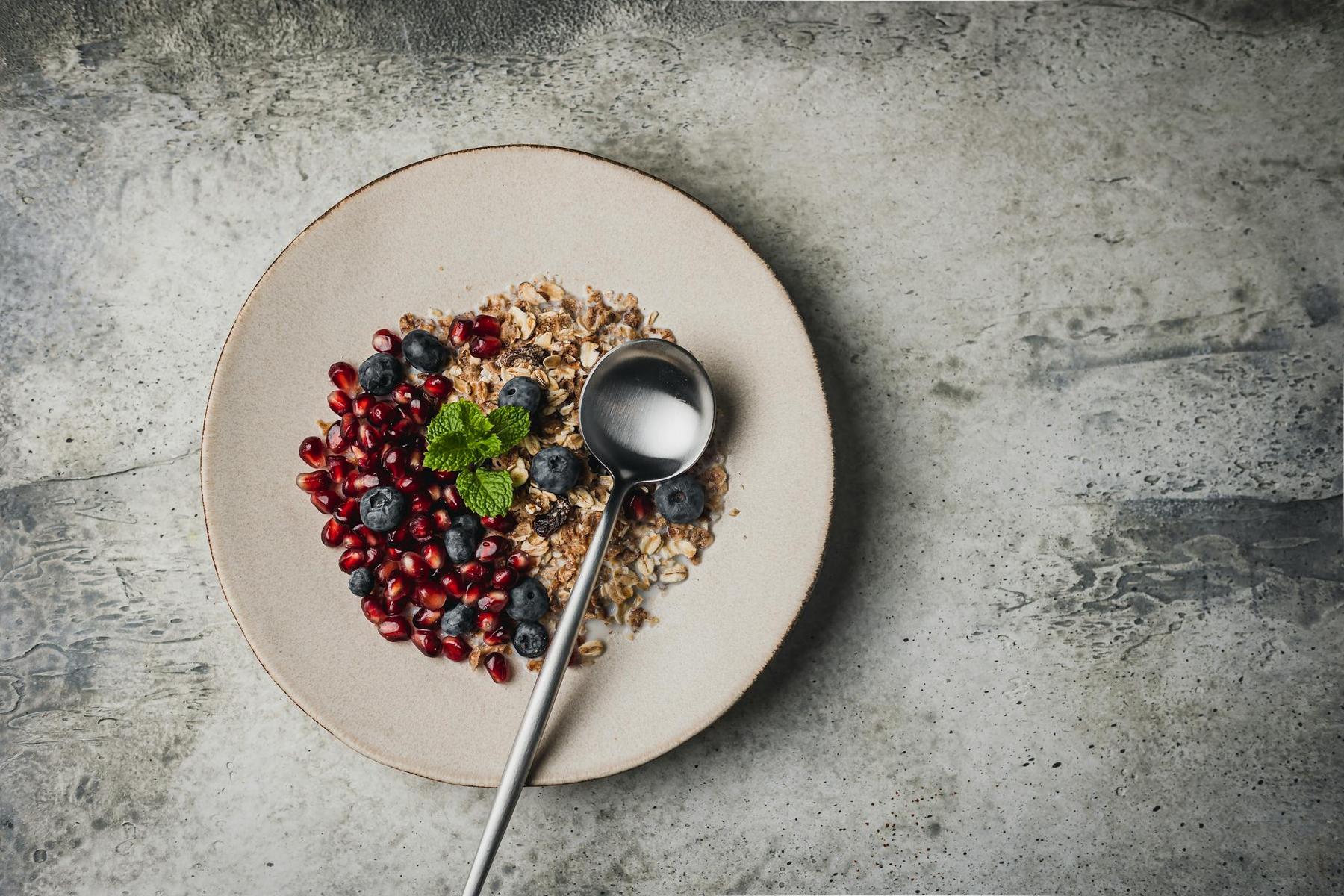Breakfast holds extraordinary power over your weight management success. The quality and composition of your morning meal influences appetite regulation, metabolic function, and calorie consumption for the entire day ahead. Yet despite widespread nutritional guidance, many individuals struggle to understand which breakfast choices genuinely support weight reduction versus those that sabotage progress through hidden calories, poor satiety, and blood sugar instability.
Research demonstrates that strategic breakfast composition—prioritising protein, fibre, and whole foods—can reduce daily calorie intake by up to 135 calories whilst improving appetite regulation. For individuals seeking medically-supported weight management, understanding evidence-based breakfast strategies provides a foundation for sustainable progress. The following clinical analysis examines low-calorie breakfast recipes supported by peer-reviewed research, offering practical applications for weight loss through nutritional optimisation.
What Makes a Breakfast Effective for Weight Loss?
The effectiveness of low-calorie breakfast recipes for weight loss extends beyond simple calorie restriction. Clinical evidence reveals three fundamental components that determine whether your morning meal supports or undermines weight management objectives.
Protein content represents the single most critical factor. A randomised controlled trial involving 156 participants found that egg-based high-protein breakfasts resulted in 3.9% body weight loss (approximately 2.4 kg) over three months, compared to only 0.2% (0.1 kg) in the lower-protein breakfast group. This dramatic difference stems from protein’s unique effects on satiety hormones, particularly peptide YY (PYY) and glucagon-like peptide-1 (GLP-1), which regulate hunger signals throughout the day.
Research examining equal-calorie breakfasts revealed that egg-based options produced 61% higher reductions in BMI, 65% more weight loss, and 34% greater waist circumference reduction compared to bagel-based alternatives after eight weeks. The mechanism involves protein’s superior thermic effect—your body utilises 20-30% of protein calories for digestion itself, compared to merely 5-10% for carbohydrates and 0-3% for fats. This translates to 80-100 additional calories burned daily through dietary thermogenesis alone.
Fibre provides the second essential component. Increasing fibre intake by just 8 grams per 1,000 calories consumed resulted in 2 kg weight loss over two years. Soluble fibres, particularly beta-glucan found in oats, form viscous gel-like substances in the digestive tract that slow gastric emptying and nutrient absorption. This mechanical action reduces blood sugar spikes by up to 30% whilst enhancing GLP-1 release through the “ileal brake” mechanism—a physiological response when nutrients reach the distal small intestine.
Caloric density and meal timing complete the framework. For weight loss purposes, breakfast should comprise 300-500 calories depending on activity level, with women targeting approximately 280 calories and men approximately 380 calories when following structured weight reduction programmes. Studies comparing high-calorie breakfast (700 kcal) with low-calorie dinner (300 kcal) versus the reverse distribution demonstrated significantly greater weight loss with front-loaded caloric intake, despite identical daily totals.
How Much Protein Should Your Breakfast Contain?
Clinical consensus establishes 20-30 grams of protein as the minimum threshold for optimal satiety and metabolic benefits. This recommendation derives from multiple research streams examining appetite suppression, muscle preservation, and adherence to calorie-restricted diets.
Increasing protein intake from 15% to 30% of total calories resulted in participants consuming 441 fewer calories per day spontaneously, leading to 5 kg weight loss over just 12 weeks without conscious calorie restriction. Even more remarkably, elevating protein to 25% of daily calories reduced late-night snacking by 50% and obsessive food thoughts by 60%—psychological factors that frequently undermine weight loss efforts.
Studies directly comparing breakfast protein levels found that 35 grams of high-quality protein proved significantly more effective than 13 grams for:
- Sustained fullness ratings over eight-hour periods
- Reduced hunger and prospective food consumption
- Decreased desire to eat throughout the day
- Lower activation in brain regions controlling food motivation and reward (confirmed via MRI imaging)
The duration of these effects extends remarkably through subsequent meals. High-protein breakfasts suppressed three-hour post-breakfast glucose responses and maintained this regulatory effect through lunch and dinner—even when lunch was consumed six hours after breakfast. This “second-meal phenomenon” demonstrates how morning protein intake establishes metabolic advantages that persist throughout the day.
Practical protein sources delivering 20-30 grams per serving include:
- Three large eggs: 19 grams protein, 215 calories
- Greek yoghurt (200g serving): 20+ grams protein, 140-180 calories
- Cottage cheese (½ cup): 20+ grams protein, 90-120 calories
- Protein-enriched oats: 5 grams from oats + 20-25 grams from protein powder
- Tofu scramble (200g): 20-22 grams protein, 150-180 calories
Which Low-Calorie Breakfast Recipes Deliver Maximum Satiety?
Evidence-based low-calorie breakfast recipes balance protein, fibre, and nutrient density whilst remaining below 400 calories. The following options represent clinically-validated combinations that maximise satiety hormones, stabilise blood glucose, and reduce subsequent calorie intake.
Under 300 Calories
Egg White and Vegetable Omelette (175 calories)
- 3 egg whites (51 calories, 11g protein)
- 100g mushrooms (22 calories, 2g fibre)
- 60g spinach (14 calories, 2g fibre)
- 1 tsp olive oil (40 calories)
- 100g cherry tomatoes (18 calories)
- Total: 15g protein, 4g fibre
Greek Yoghurt Berry Bowl (240 calories)
- 150g fat-free Greek yoghurt (90 calories, 15g protein)
- 100g mixed berries (55 calories, 4g fibre)
- 1 tbsp chia seeds (60 calories, 5g fibre, 3g protein)
- Cinnamon to taste
- Total: 18g protein, 9g fibre
Overnight Oats Foundation (196 calories)
- 40g rolled oats (154 calories, 5g protein, 4g fibre)
- 125ml unsweetened almond milk (17 calories)
- 30g raspberries (15 calories, 2g fibre)
- ½ tsp vanilla extract (6 calories)
- Total: 5g protein, 6g fibre
300-400 Calories
High-Protein Scramble (320 calories)
- 6 egg whites (102 calories, 22g protein)
- 1 whole egg (71 calories, 6g protein)
- 80g sautéed vegetables (40 calories, 3g fibre)
- 1 slice high-fibre wholegrain toast (80 calories, 4g protein, 6g fibre)
- Cooking spray (negligible)
- Total: 32g protein, 9g fibre
Cottage Cheese Power Bowl (310 calories)
- 150g cottage cheese (135 calories, 21g protein)
- 100g sliced apple (52 calories, 2g fibre)
- 20g walnuts (130 calories, 3g protein, 1g fibre)
- Cinnamon (negligible)
- Total: 24g protein, 3g fibre
Protein-Enriched Porridge (350 calories)
- 40g rolled oats (154 calories, 5g protein, 4g fibre)
- 1 scoop (30g) protein powder (120 calories, 24g protein)
- 100ml unsweetened almond milk (13 calories)
- 80g blueberries (45 calories, 2g fibre)
- 1 tsp flaxseeds (20 calories, 1g fibre)
- Total: 29g protein, 7g fibre
The strategic combination of complete proteins with soluble and insoluble fibres creates synergistic satiety effects. Beta-glucan from oats slows gastric emptying whilst egg proteins trigger sustained PYY and GLP-1 elevation. This hormonal cascade reduces hunger for 36+ hours post-consumption—a remarkable duration that facilitates adherence to calorie-restricted eating patterns.
What Role Does Fibre Play in Breakfast-Driven Weight Loss?
Dietary fibre represents a non-negotiable component of effective low-calorie breakfast recipes for weight loss. Australian dietary guidelines recommend 22-34 grams daily depending on age and sex, with women requiring 21-25 grams and men requiring 30-38 grams. Breakfast should contribute 5-10 grams toward this target for optimal weight management support.
Soluble fibre mechanisms extend beyond simple fullness. When beta-glucan and pectin form viscous solutions in the digestive tract, they physically reduce digestive enzyme access to starches and sugars. This mechanical barrier slows glucose absorption, preventing the rapid blood sugar elevation and subsequent crash that triggers compensatory hunger. Viscosity correlates directly with glycaemic control—more viscous fibres produce more pronounced blood sugar stabilisation.
The “ileal brake” phenomenon demonstrates fibre’s hormonal influence. When partially digested nutrients containing soluble fibre reach the ileum (distal small intestine), specialised cells release GLP-1 and PYY in greater quantities than when food moves rapidly through the upper digestive tract. This mechanism evolved to prevent overconsumption by signalling satiety when nutrient absorption remains incomplete—a natural appetite regulation system that fibre-rich breakfasts exploit therapeutically.
Fermentable fibres provide additional metabolic advantages. Gut microbiota ferment resistant starches and certain soluble fibres into short-chain fatty acids (SCFAs), particularly butyrate, propionate, and acetate. These compounds improve glucose homeostasis, reduce inflammation, and may enhance fat oxidation through multiple pathways. The microbiota composition itself shifts favourably with higher fibre intake, creating positive feedback loops that support weight management.
How Do These Breakfasts Compare to Typical Australian Options?
Traditional Australian breakfast choices frequently undermine weight loss efforts through excessive calories, minimal protein, and refined carbohydrates. Understanding these comparisons illuminates why strategic recipe selection produces measurably superior outcomes.
White toast with butter and jam delivers approximately 250 calories with minimal protein (4-5g) and fibre (1-2g), providing no satiety mechanisms beyond momentary fullness. Blood sugar spikes rapidly, crashes within 90-120 minutes, and triggers compensatory hunger. The same caloric budget allocated to Greek yoghurt with berries and chia seeds provides 18g protein, 9g fibre, and sustained appetite suppression lasting 4-6 hours.
Commercial breakfast cereals, even those marketed as “healthy,” typically contain 15-25 grams of added sugars per serving. A 45g serving with 200ml full-fat milk totals approximately 280 calories with 8-10g protein but minimal sustained satiety. Research demonstrates low glycaemic load breakfasts result in lower hunger ratings and reduced energy intake before lunch compared to high-glycaemic alternatives like sweetened cereals.
Café-style breakfasts present particular challenges. Avocado toast with poached eggs appears nutritious but frequently contains 450-600 calories depending on bread type, avocado quantity, and oil usage. Whilst providing quality fats and protein, this exceeds optimal calorie ranges for many weight loss programmes. A home-prepared version using 1 slice high-fibre bread, ½ avocado, and 1 poached egg delivers equivalent satisfaction at 250-280 calories.
The compositional difference between processed and whole-food breakfasts extends beyond macronutrients. Micronutrient density, food matrix effects, and processing degree all influence metabolic responses. Whole eggs provide choline, lutein, and zeaxanthin absent from grain-based alternatives. Oats deliver avenanthramides with anti-inflammatory properties. These bioactive compounds contribute to overall health outcomes beyond weight management alone.
When Should You Consider Professional Weight Management Support?
Self-directed dietary modifications provide valuable foundations for weight management, yet certain circumstances warrant professional medical intervention. Understanding when breakfast optimisation requires integration with comprehensive healthcare ensures appropriate treatment escalation.
Individuals with BMI exceeding 27 kg/m², particularly those with obesity-related comorbidities including type 2 diabetes, hypertension, or sleep apnoea, benefit from medically-supervised programmes that extend beyond nutritional guidance alone. Clinical evidence demonstrates that integrated approaches combining dietary modification, behavioural support, and medical treatments produce superior outcomes compared to diet alone for this population.
Repeated unsuccessful weight loss attempts despite consistent dietary adherence may indicate metabolic adaptations, hormonal dysregulation, or medication interactions requiring clinical assessment. Certain pharmaceutical agents, including some antidepressants, antipsychotics, and corticosteroids, interfere with appetite regulation and energy metabolism. Professional evaluation identifies these barriers and implements appropriate modifications.
Psychological factors frequently complicate weight management efforts. Disordered eating patterns, emotional eating, and stress-related overconsumption require behavioural interventions that complement nutritional strategies. Registered dietitians and psychologists specialising in weight management provide evidence-based cognitive behavioural therapy and motivational interviewing techniques that improve long-term adherence.
The emergence of medical weight loss treatments has transformed obesity management. These interventions work through multiple mechanisms including appetite suppression, delayed gastric emptying, and enhanced satiety hormone production—complementing the natural effects achieved through high-protein, high-fibre breakfasts. When combined with optimised nutrition, these treatments produce clinically significant weight reduction that supports metabolic health improvements.
Skip the struggles. Our patients achieve up to 20.2% weight reduction with medical weight loss treatments delivered straight to their door. No clinics. No waiting. Just results. See if you’re eligible for our medical weight loss treatments – take our quiz.
Can I lose weight eating 500-calorie breakfasts?
Yes, provided your total daily calorie intake maintains an appropriate deficit. For weight loss, breakfast should comprise 300-500 calories depending on activity level, with total daily intake tailored to individual needs. The calorie distribution matters—front-loading calories at breakfast whilst reducing dinner intake can produce greater weight loss than the reverse pattern, even when overall intake is the same. Focusing on 20-30 grams of protein and 5-8 grams of fibre within your calorie budget helps maximise satiety and metabolic benefits.
What if I’m not hungry in the morning?
Appetite patterns can shift with regular breakfast consumption. Research shows that consistent breakfast eaters tend to have lower BMI, smaller waist circumference, and improved metabolic markers compared to skippers. If you’re not very hungry, start with smaller, protein-rich options like Greek yoghurt, hard-boiled eggs, or a protein smoothie, and gradually increase portion sizes. Alternatively, a delayed breakfast (around 10-11am) can still offer metabolic advantages while accommodating your natural appetite rhythm.
How quickly will I see weight loss results from these breakfast changes?
Breakfast optimisation contributes to a daily calorie deficit rather than triggering immediate weight loss. Within 1-2 weeks, many people notice reduced mid-morning hunger and fewer cravings. Measurable weight loss, typically around 0.5-1 kg per week, usually emerges within 2-4 weeks when combined with an overall calorie-controlled diet. Consistency over 3-6 months is key for sustainable results.
Are meal replacement shakes as effective as whole food breakfasts?
Research indicates that solid, well-balanced breakfasts provide superior satiety compared to liquid meal replacements, even if calorie and macronutrient content are similar. The act of chewing and the physical volume of food contribute to enhanced fullness. However, meal replacement shakes can be convenient. If you choose this option, select shakes that provide 20-30 grams of protein, at least 5 grams of fibre, and minimal added sugars, and consider adding ingredients like psyllium husk or ground flaxseed for extra satiety.
Can I prepare these low-calorie breakfasts in advance?
Absolutely. Meal preparation can make it easier to stick to your breakfast routine. Options like overnight oats can be stored in the refrigerator for 3-4 days, while egg muffins or frittatas can be prepared in batches and kept refrigerated for several days or frozen for longer storage. Pre-portioning ingredients for smoothies or porridges can also save time and help ensure you stick to your nutritional goals.



